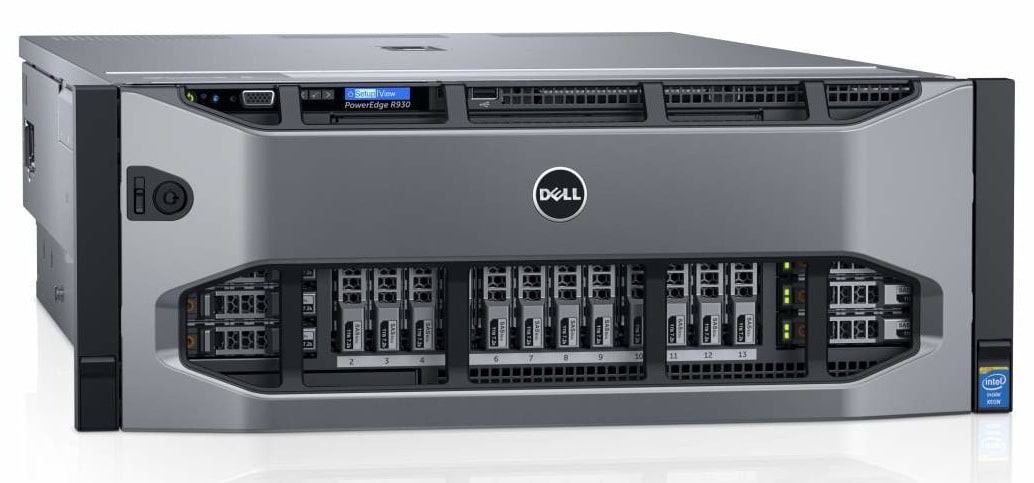
Today Dell Inc. introduced its most powerful four-socket server, the Dell PowerEdge R930. The R930 is the next step up from the PowerEdge R920 we reviewed earlier. Like its predecessor, the Dell PowerEdge R930 is designed to handle nearly any workload and configuration. This new addition to Dell’s 13th generation PowerEdge servers is ideal for customers migrating to x86 platforms. And Dell is further expanding its four-socket portfolio with PowerEdge FC830 and PowerEdge M830.
The PowerEdge R930 still has 96 DIMM slots, 6TB of memory, and still holds 24 2.5” drives (either HDD or SSD) that the R920 had, however the new server uses Intel Xeon E7-8800/4800 v3 family of processors. The latest server also supports up to 8 Express Flash NVMe PCIe SSDs, this time up to 3.2TB capacity. The R930 uses iDRAC for management as well. As we said, iDRAC contributes to its flexibility by allowing users to deploy, update, monitor and maintain their Dell servers without the need of any additional software. Because it is embedded within the server itself, iDRAC works seamlessly and is compatible with virtually any operating system or hypervisor all the while giving users the ability to streamline their local and remote server management and to significantly or eliminate the need for administrators to be on site.
The PowerEdge also offers some boost in performance over the previous model. Though the R920 held world record performance, Dell claims the R930 performs up to 22% better. And, using the new Express Flash NVMe PCIe SSDs, users should see ten times more I/O’s than seen with traditional SSDs. The R930 can scale flexibly, optimizing transactions and operations all the while reducing latency.
Key features include:
- Future-ready enterprise: workload-ready (Oracle, SAP, Microsoft), virtual-infrastructure ready (VMware, Microsoft), software-defined (SDN, SDS, SDDC), cloud-ready (Azure, VMware, OpenStack), and Big Data-optimized (Hadoop, Cloudera)
- 84% less time collecting data: new at-the-box management tools allow users to deploy, upgrade, and troubleshoot servers
- Automatic updates: Firmware is kept up-to-date with automatic updates
- iDRAC embedded tech support: cuts troubleshooting down by up to 75%
- ZeroTouch Deployment: auto-configuration drastically reducing deployment time and entry errors.
- RAS (reliability, availability, and serviceability) features: built-in to protect mission critical and data-intensive applications
- DAAD (Dell Acceleration Appliance for Databases): solves bottlenecks in OLTP performance, accelerating database infrastructure
In addition to the PowerEdge R930 rack server, Dell is expanding its four-socket server portfolio. Dell has updated the PowerEdge VRTX and PowerEdge M1000e converged platforms, and introduced the PowerEdge FC830 and the PowerEdge M830 blade servers. Both the FC830 and M830 have Intel Xeon E5-4600 v3 processors and are designed to meet the performance needs for workloads in database, technical computing, and virtualized environments.
Availability
The Dell PowerEdge R930 is expected to be available later this year.

